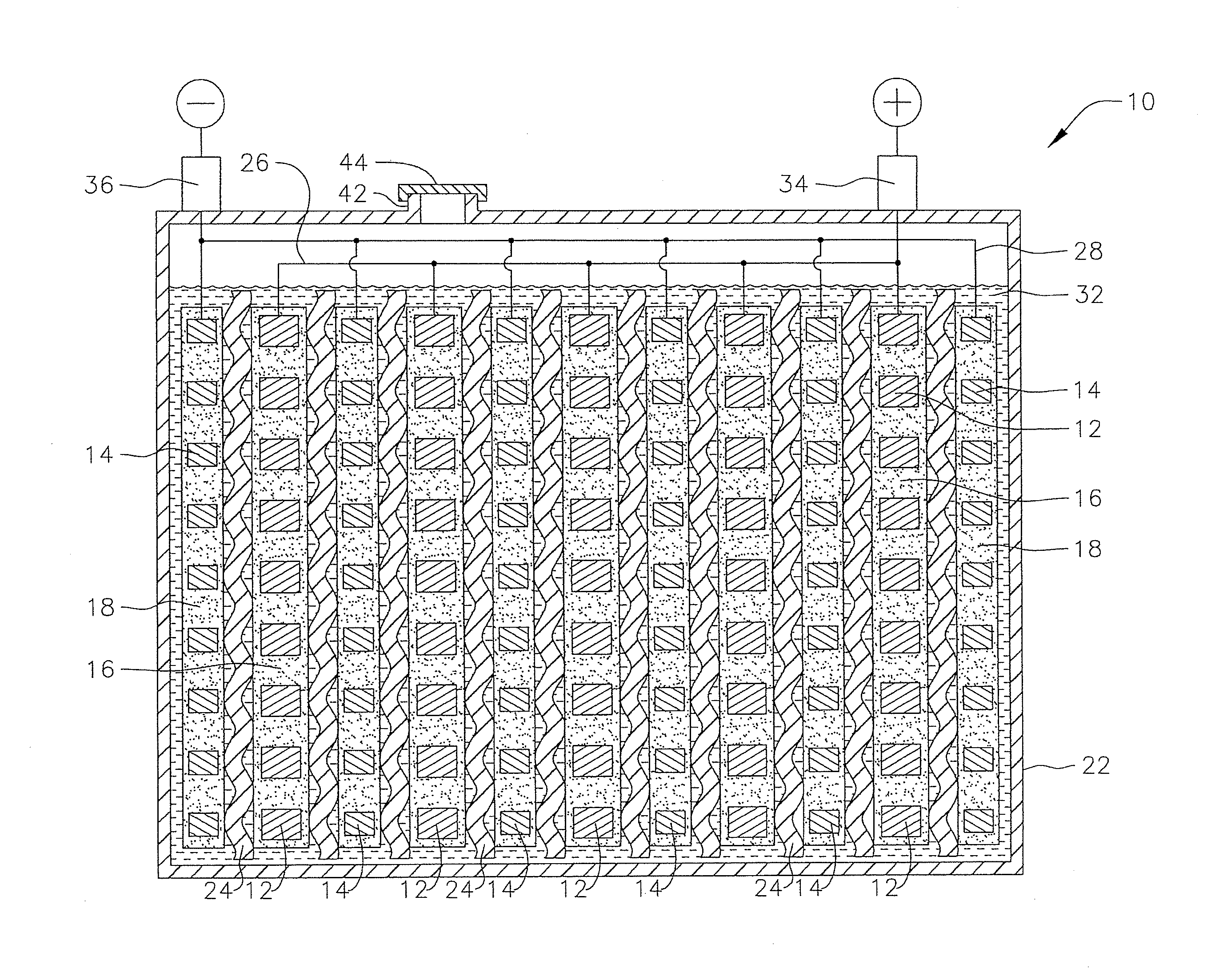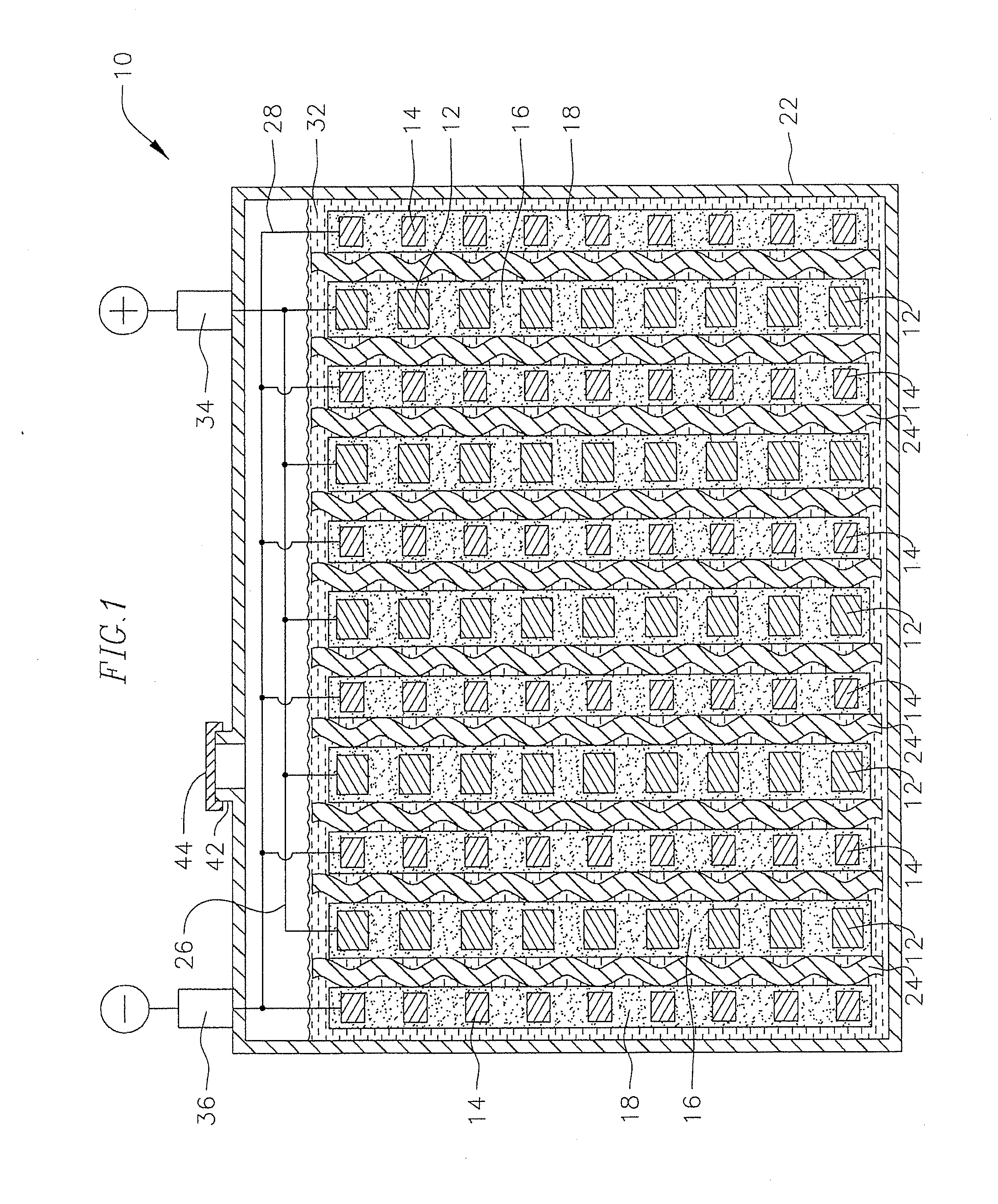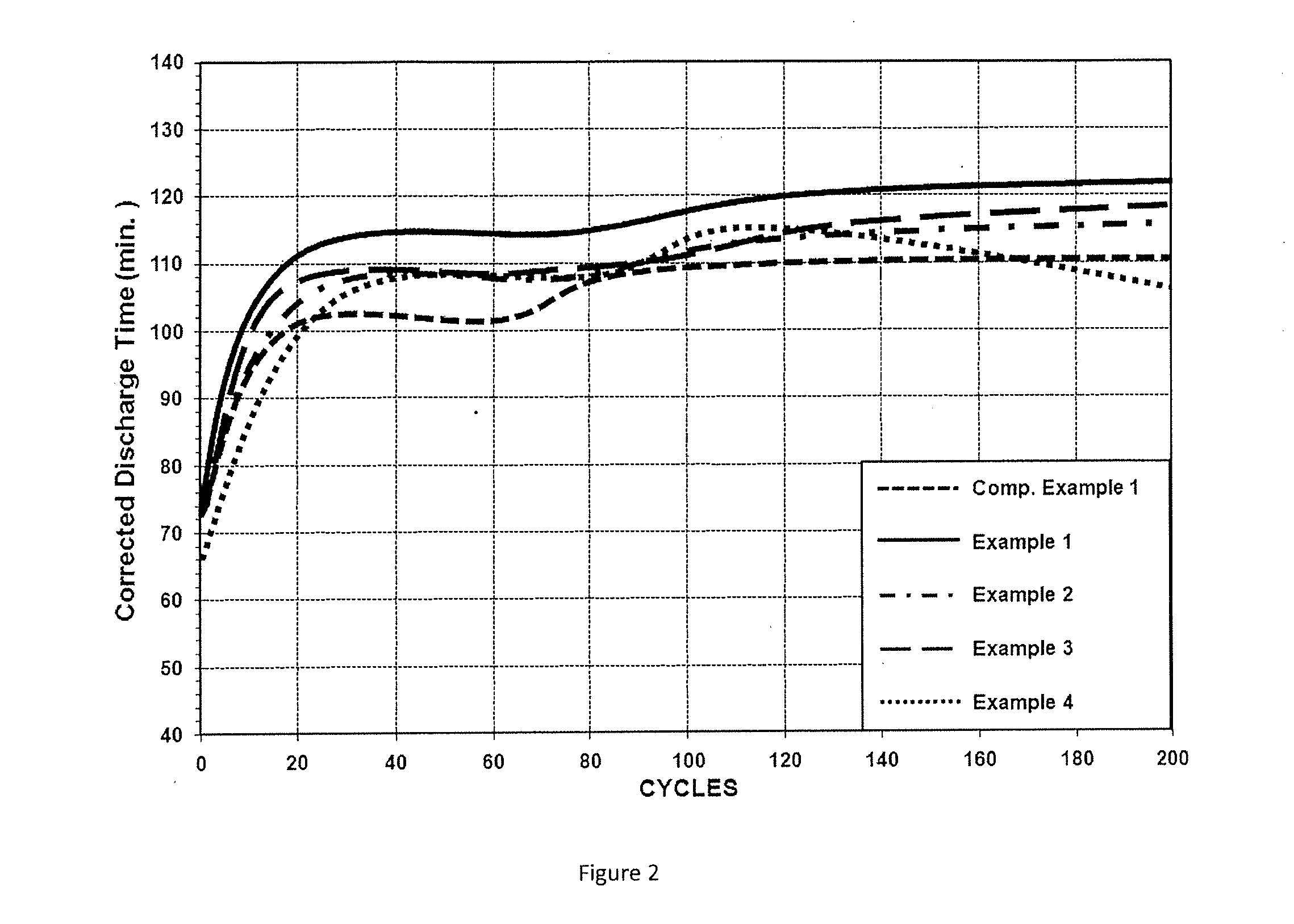Positive active material for a lead-acid battery
a lead-acid battery and active material technology, applied in the direction of lead-acid accumulators, cell components, transportation and packaging, etc., can solve the problem of shortening the life of batteries
- Summary
- Abstract
- Description
- Claims
- Application Information
AI Technical Summary
Problems solved by technology
Method used
Image
Examples
example 1
Positive Active Material Paste and Positive Plate Formation
[0031]A positive active material paste was made by first mixing 10 lbs of lead oxide powder and 3.78 g of polyester fiber in a mixer. To that mixture, 9.08 g of fumed silica, 9.08 g of graphite, and 9.08 g of tin sulfate were added while mixing continued. Then, specified amounts of water and acid were added and mixing continued until a positive active material paste was formed. The positive paste included lead oxide, polyester fiber, fumed silica, graphite, tin sulfate, water, and aqueous sulfuric acid. The paste density was about 4.47 g / cm3, which is considered a high density paste and suitable for cycling applications. The resulting paste was gray in color and had a fumed silica concentration of about 0.2 wt % based on the weight of lead oxide on a dry basis, a graphite concentration of about 0.2 wt % based on the weight of lead oxide on a dry basis, and a tin sulfate concentration of about 0.2 wt % based on the weight of ...
example 2
[0033]A positive active material paste and positive plates identical to those described at Example 1 were made using the method described at Example 1 with the exception that 2.27 g of fumed silica and 2.27 g of graphite were used. The resulting paste had a paste density of 4.58 g / cm3, a fumed silica concentration of about 0.05 wt % based on the weight of lead oxide on a dry basis, and a graphite concentration of about 0.05 wt % based on the weight of lead oxide on a dry basis.
example 3
[0034]A positive active material paste and positive plates identical to those described at Example 1 were made using the method described at Example 1 with the exception that 4.54 g of fumed silica and 4.54 g of graphite were used. The resulting paste had a paste density of 4.57 g / cm3, a fumed silica concentration of about 0.1 wt % based on the weight of lead oxide on a dry basis, and a graphite concentration of about 0.1 wt % based on the weight of lead oxide on a dry basis.
PUM
| Property | Measurement | Unit |
|---|---|---|
| weight ratio | aaaaa | aaaaa |
| weight | aaaaa | aaaaa |
| mechanical characteristics | aaaaa | aaaaa |
Abstract
Description
Claims
Application Information
 Login to View More
Login to View More - R&D
- Intellectual Property
- Life Sciences
- Materials
- Tech Scout
- Unparalleled Data Quality
- Higher Quality Content
- 60% Fewer Hallucinations
Browse by: Latest US Patents, China's latest patents, Technical Efficacy Thesaurus, Application Domain, Technology Topic, Popular Technical Reports.
© 2025 PatSnap. All rights reserved.Legal|Privacy policy|Modern Slavery Act Transparency Statement|Sitemap|About US| Contact US: help@patsnap.com



